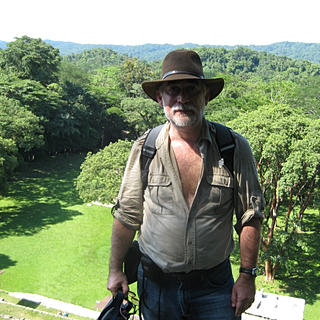Part 8 Crew Vehicles, Rockets, Launch centers and Mission Control
- Michael George Cooper
- Aug 19, 2018
- 3 min read
(Español a continuación)
Different crew space vehicles, rockets and space centers are mentioned along the book.
The Human Mission to Mars is a World wide effort, this is why along “Mars Hostages” you will find different vehicles, rockets, Launch Centers and Mission Control Centers, some are real and some came from my Imagination.
For Deep Space Exploration, this is the Lunar Orbiting Missions and Human Mission to Mars, is the Orion, a vehicle that is being built by NASA, later in the book the Legatus is introduced and tested, it will be used for the third human Mission to Mars this one was designed and built by Europe.
For LEO, Low Earth Orbit missions, I am considering the Beyond Earth vehicles from the commercial program, the Orbiter Series from the European Space Agency, these vehicles have the capability to return from Orbit to a runway (As the Space Shuttle Orbiter did) or to splash down. Other vehicle used is the Soyuz (from Russia) and the Dreamer a new Russian Space Vehicle. All these vehicles transport crews to the EOSS and the ISS, and at some point, using them, will perform the first inter-Space Station Mission traveling from the EOSS to the ISS.
Different launching vehicles are used as the SLS, Delta IV, the Ariane, and the Long March among others, many are heavy lift rockets.
Launching sites located in Kourou, Baikonur, the Kennedy Space Center, China and Japan, Mission Control Centers in Korolev, Houston, Pasadena, Cologne Japan, and China and in the UK, all form part of the story.
All these centers and vehicles are coordinated by the WSEO for this project to achieve the objective, and because the head of every Space Agency is part of the board, the coordination and project management is controlled, this way, different activities could take place at the same time frame to achieve the goal on time.
--O--
Diferentes vehículos espaciales tripulados, cohetes y centros espaciales se mencionan a lo largo del libro.
La Misión Humana a Marte es un esfuerzo mundial, esta es la razón por la cual a lo largo de "Rehenes de Marte o Mars Hostages" encontrarás diferentes vehículos, cohetes, Centros de Lanzamiento y Centros de Control de Misión, algunos son reales, otros vinieron de mi Imaginación.
Para la Exploración del Espacio Profundo, esta es la Misión de Orbitar Lunar y la Misión Humana a Marte el vehículo que se usa es el Orión, una nave que está siendo construido por la NASA, más adelante en el libro Legatus se construye y prueba, también para Misiones Lunares Orbitales y se usará en Terra-3 este fue diseñado y construido por Europa.
Para las misiones, a la órbita de la tierra o LEO,( Low Earth Orbit) como se conoce, estoy considerando los vehículos Beyond Earth del programa comercial, la serie Orbiter de la Agencia Espacial Europea, estos vehículos tienen la capacidad de regresar de Orbita a una pista de aterrizaje (como lo hacía el Space Shuttle Orbiter) o amarizar. Otro vehículo utilizado es el Soyuz (de Rusia) y el soñador un nuevo vehículo espacial ruso. Todos estos vehículos llevan tripulaciones al EOSS y al ISS, y en algún momento realizarán la primera misión entre estaciones espaciales que viaje de la EOSS a la ISS.
Se utilizan diferentes vehículos de lanzamiento como el SLS, el Delta IV, el Ariane y long March de China, entre otros, muchos son cohetes para llevar a la órbita carga pesada, que puede ser una etapa de un cohete para abandonar la órbita terrestre.
Los sitios de lanzamiento se ubican en Kourou Guyana Francesa, Baikonur en Rusia, el Centro Espacial Kennedy, China y Japón, los Centros de Control de Misión en Korolev, Houston, Pasadena, Colonia, Japón, China y en el Reino Unido, todos forman parte de esta historia.
Todos estos centros y vehículos están coordinados por WSEO para lograr el objetivo, y como el jefe de cada agencia espacial es parte de la junta directiva, la coordinación y la gestión del proyecto están controladas, de esta manera, diferentes actividades podrían tener lugar al mismo tiempo. para alcanzar el objetivo en el tiempo esperado.








Comments